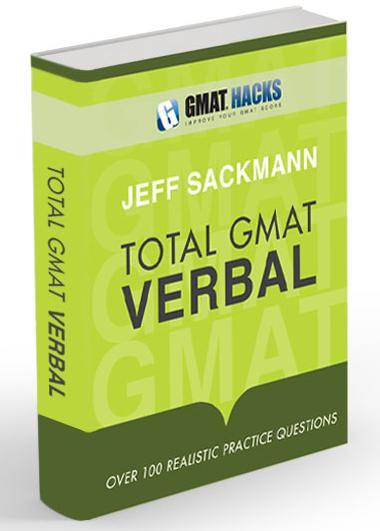
Bookshelf
|
|
Total GMAT Math Jeff's complete Quant guide, on sale now! |
|
|
Total GMAT Verbal Everything you need to ace GMAT Verbal! |
1,800 Practice Math Questions
Buy Jeff's books at Amazon.com

GMAT Official Guide, with IR
OG Math | OG Verbal
OG12 & Quant Rev solutions!
GMAT Question of the Day
Beginner's Guide to the GMAT
GMAT Hacks Affiliate Program

Recent Hacks

Categories
- General Study Tips
- Goals and Planning
- CAT Strategy
- The Mental Game
- GMAT Math Strategy
- GMAT Math Topics
- Mental Math
- Data Sufficiency
- Critical Reasoning
- Reading Comprehension
- Sentence Correction
- Analytical Writing Assessment
- Integrated Reasoning
- IR Explained
- Business School Admissions
- GMAT Prep Resources
- Practice Questions
- Total GMAT Math
- Total GMAT Verbal
- GMAT 111

IR Explained: Q30: Used-Car Sales
August 17, 2012
| You should follow me on Twitter. While you're at it, take a moment to subscribe to GMAT Hacks via RSS or Email. |
This post is part of a series--IR Explained--that walks through the sample Integrated Reasoning questions provided in the latest edition of the GMAT Official Guide.
This Graphics Interpretation shows you a line graph with three lines, each showing cars sold per month in 2010. One of the three lines is a citywide average (of four dealers, as explained in the introductory paragraph), while the others represent two of the four dealers.
30A asks a question that could lead to extensive calculation, but it doesn't need to. The "citywide average" line is the dotted line, which is the lowest of the three (or tied for lowest) in every month except for October.
Given that one or both of the two specific dealers outsold the average in 11 of the 12 months, it is a very safe bet that those two dealers outsold the average over the course of the year. If they outsold the average, they must have represented more than half of the sales made by the city's four dealers.
30B requires a more precise calculation. In June, ABC sold 30 cars, XYZ sold 28, and the average was 26. Remember that there are four total dealers.
Thus, the total number of cars sold was 4(26) = 104. To find the number sold by the other two dealers, subtract the number sold by ABC and XYZ: 104 - 30 - 28 = 46.
For this second question, there is a quicker, but more advanced, method.
Instead of considering the raw numbers (26, 28, 30), think of each amount relative to the average. Think of the average as zero. Thus, we're removing 26 from every total. That means ABC is +4 and XYZ is +2, so the two dealers we know about represent +6.
If the average is zero and those two dealers are +6, the other two dealers must be -6, or -3 each--3 below average. Since "average" is 26, 3 below average is 23, so the other two dealers sold (on average) 23 cars each. That's a total of 2(23) = 46 cars.
Stay tuned (or subscribe) for more Integrated Reasoning explanations
About the author: Jeff Sackmann has written many GMAT preparation books, including the popular Total GMAT Math, Total GMAT Verbal, and GMAT 111. He has also created explanations for problems in The Official Guide, as well as 1,800 practice GMAT math questions.
 |
Total GMAT Verbal
The comprehensive guide to the GMAT Verbal section. Recognize, dissect, and master every question type
you'll face on the test. Everything you need, all in one place, including 100+ realistic practice questions. |